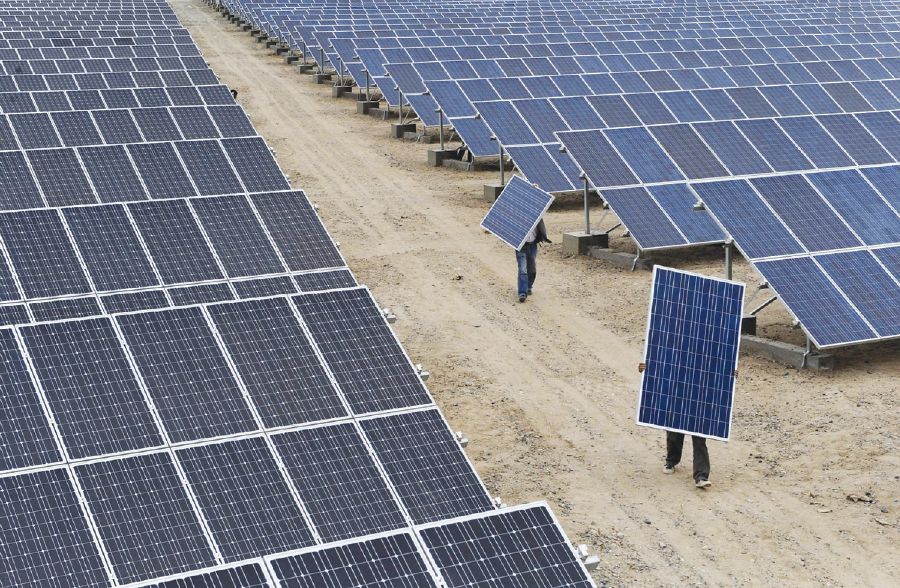THE year 2018 had kicked off with the United States signalling a rise of tariffs on Chinese imports. Between 2012 and 2016, US partner share with China reached 21.42 per cent, making China its biggest exporter.
It is due also to a very pronounced trade surplus between China and the US; the latter has targeted Chinese imports for temporary tariff hikes.
In January last year, the US targeted the temporary tariff hikes at solar panels and washing machines imported from China.
In March last year, it widened its list to include aluminium and steel from China.
In retaliation, the Chinese government announced around 106 goods that were to be targeted for tariff hikes, which included key exports from the US such as soybeans and cars.
Counterattacking, the US administration announced a new list of 1,333 Chinese product categories that may face 25 per cent tariffs in April last year.
To end this tit-for-tat moves, bilateral talks are being held in Beijing, but a consensus has not yet been achieved.
The US is seeking to reduce its deficit by US$200 billion by 2020 from a trade gap totalling US$375 billion currently.
Despite the talks last year , the US in mid-June introduced yet another round of tariff hikes on US$34 billion worth of Chinese imports, implemented on July 6.
Against the background of protectionism and trade war between these two giant economies, the solar panel temporary tariff increase is taken as an example of how protectionism does not only hurt the targeted countries but most importantly, it will also hurt the country and its industries that are implementing these protectionist measures.
Even if was temporarily erected, it may impact not only the manufacturers and exporters of the products, but also the growth of the promising sector.
In the region, China, Malaysia, Singapore, the Philippines and Vietnam were among the top 10 exporters of solar panels to the US with different levels of export intensity, due to the anti-dumping and countervailing measures introduced by the US on China’s solar panel exports in 2012.
To survive, Chinese solar panel producers relocated to Southeast Asia, where wages are relatively low and unskilled labour is ample, with a moderate political climate.
It is with this relocation that Malaysia’s solar panel industry bloomed. Up to 2016, Malaysia was the biggest exporter of photovoltaic solar panels (PV) to the US.
Thailand’s PV exports, just like Malaysia’s, flourished due to Chinese companies relocating to the country.
Exports to the US shot to US$520 million in 2016, whereas in 2012, the exports were minimal.
The same was experienced by Vietnam. In 2016, its exports reached US$514 million, a significant increase from less than US$1 million worth of PVs in 2012.
Singapore’s PV exports, just like its neighbouring countries, have experienced a sectoral boom.
Exports to the US reached more than the US$500 million mark in 2015, while its exports surpassed the US$100 million mark only three years ago.
The rhetoric behind this protectionist measure is to nurture and grow the US solar panel industry.
However, it is believed that Trump’s move would only benefit the US solar-panel manufacturers which are made up of a few very large producers. As for job creation, manufacturers of solar panels are becoming highly automated in the US.
Protecting the industry will not lead to job creation in the manufacturing sector. Manufacturing of solar panels makes up only about 14 per cent of jobs in the US solar industry, and it is increasingly becoming more automated.
On the other hand, the solar panel installation industry is very much labour intensive.
There are 137,133 workers who install rooftop solar panels.
They make up the largest share of employment in the sector. Installation companies, however, have always operated on a narrow margin of profit.
With higher prices of solar panels due to the tariff increase, the margin of profit will be narrower. The uncertainty around the tariff hikes had dampened future investments in new start-ups in the industry in the US early last year. Following the announcement, solar panel companies in the US laid off workers by the thousands and cut investments.
In summary, the US move to introduce tariff hikes extends beyond solar panels from China will impact poor households and the lower-middle income group in the US significantly.
The move, even though well-targeted, will backfire, impacting the US more negatively than China.
This article first appeared in the New Straits Times on February 18, 2019.





